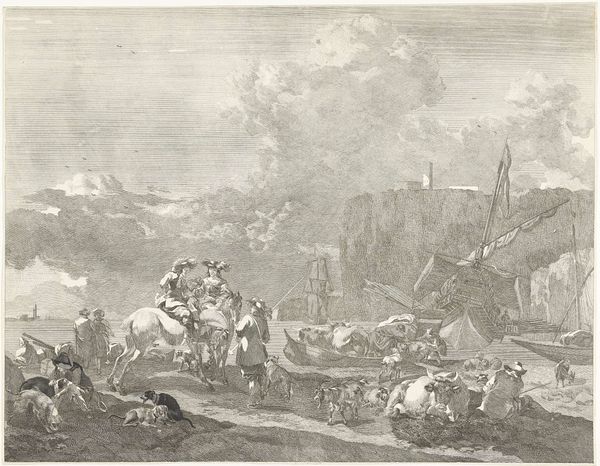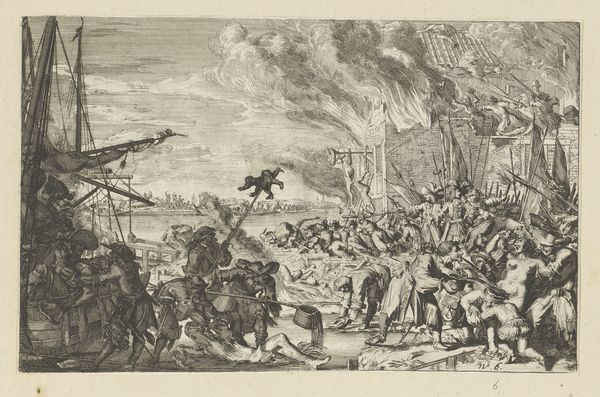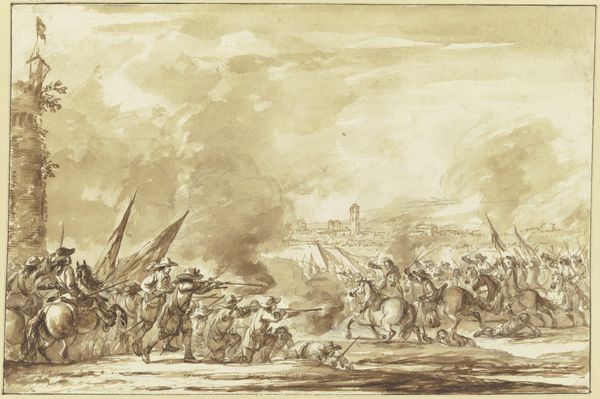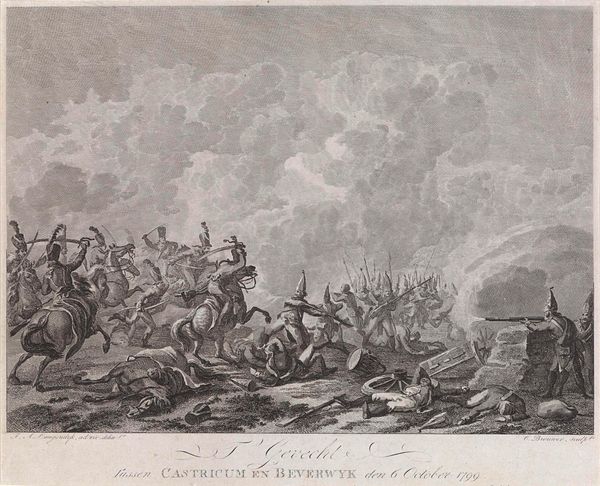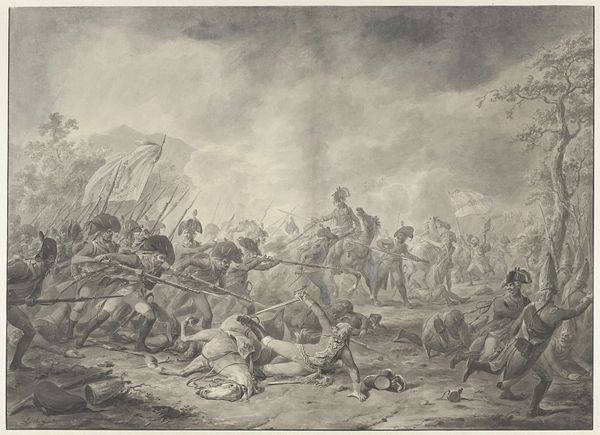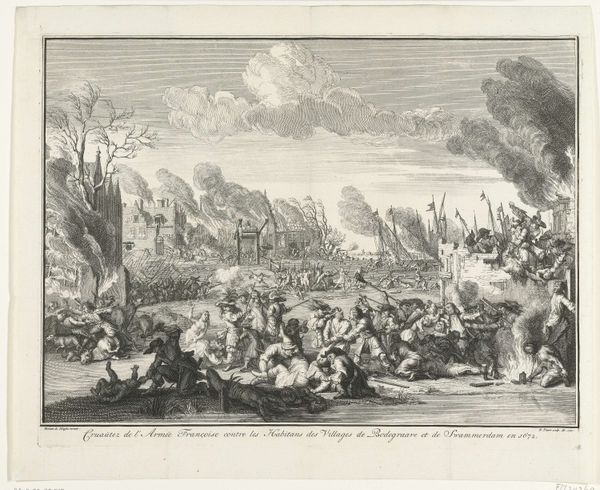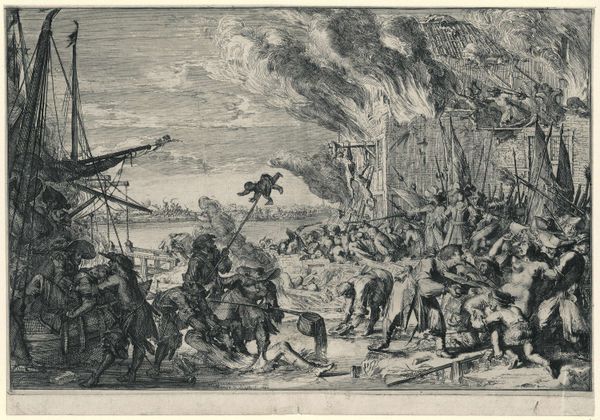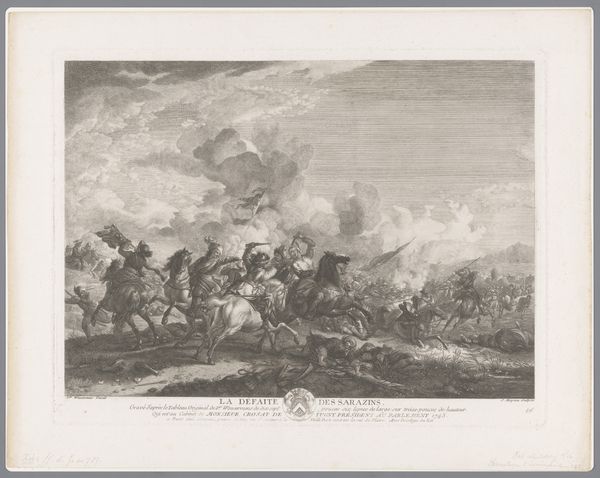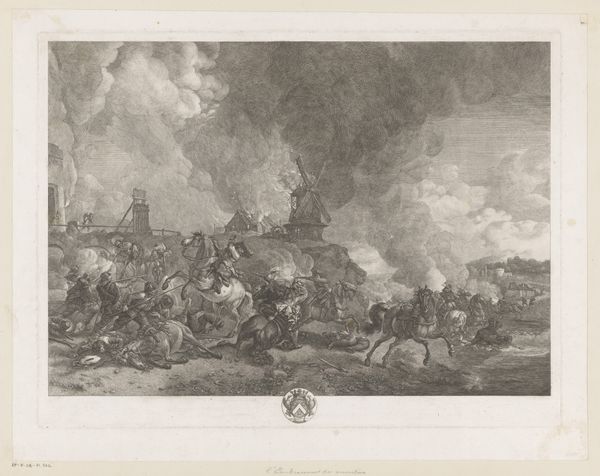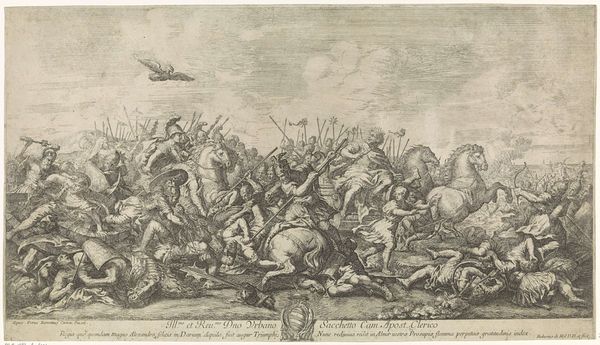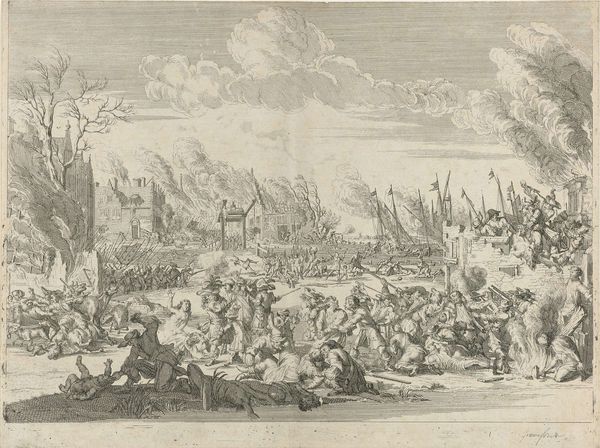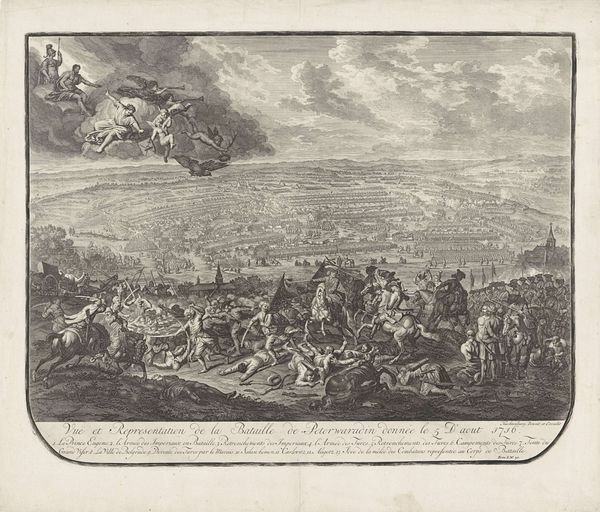
print, engraving
#
narrative-art
#
baroque
# print
#
old engraving style
#
landscape
#
figuration
#
history-painting
#
engraving
Dimensions: height 341 mm, width 480 mm
Copyright: Rijks Museum: Open Domain
Curator: Let's consider this dynamic engraving by Hyacinth de La Pegna from 1751, titled "Landschap met een veldslag" – Landscape with a battle scene. The work encapsulates a scene of warfare rendered with remarkable detail. Editor: My first impression is how chaotic yet ordered the composition is, a very Baroque paradox! The foreground teems with active soldiers and implements of war, all rendered in stark black and white, yet the eye is pulled toward a softer, somewhat idyllic landscape beyond. Curator: De La Pegna certainly employs Baroque drama to emphasize conflict. I'm particularly interested in the engraving as a reflection of 18th-century military history and the representation of warfare during the Enlightenment era. Consider the role that prints played in disseminating information about military campaigns to a wider public. Editor: Exactly. It's not just a snapshot of battle, but a calculated political statement. Who benefits from this portrayal? Is it glorifying war, or is it subtly critiquing it through the sheer density of the scene—the pileup of bodies, the billowing smoke hinting at something sinister? We should ask about the lived experience of the people in the bottom left and contrast with those in the distant city. Curator: An important point. The emphasis on technical accuracy also reveals societal shifts; new methods and forms of governance also altered war. Notice the organization of troops; advancements in weapon tech rendered some traditional warfare strategies futile. It's about how the battle becomes a visual symbol of broader power structures. Editor: And power structures deeply entwined with social identities, too. It makes me think about how such imagery has been weaponized throughout history. I question how we interpret the representation of violence like this without becoming desensitized or even complicit in the spectacle. The black and white tones create a disturbing separation from the blood and trauma. It turns human tragedy into design. Curator: Well, what I take from this particular work is how De La Pegna navigated the artistic conventions and expectations of his time, responding to demands for this type of history painting. Editor: For me, this artwork urges a deeper discussion about how war is visualized, and for whose consumption, across history. It prompts a much-needed conversation.
Comments
No comments
Be the first to comment and join the conversation on the ultimate creative platform.
